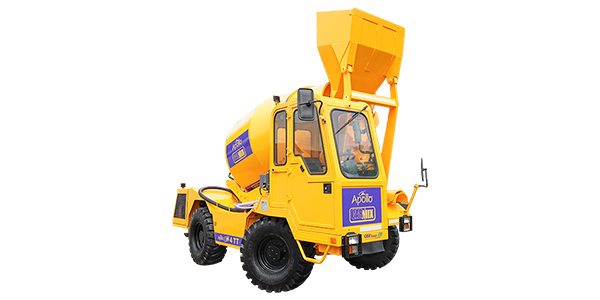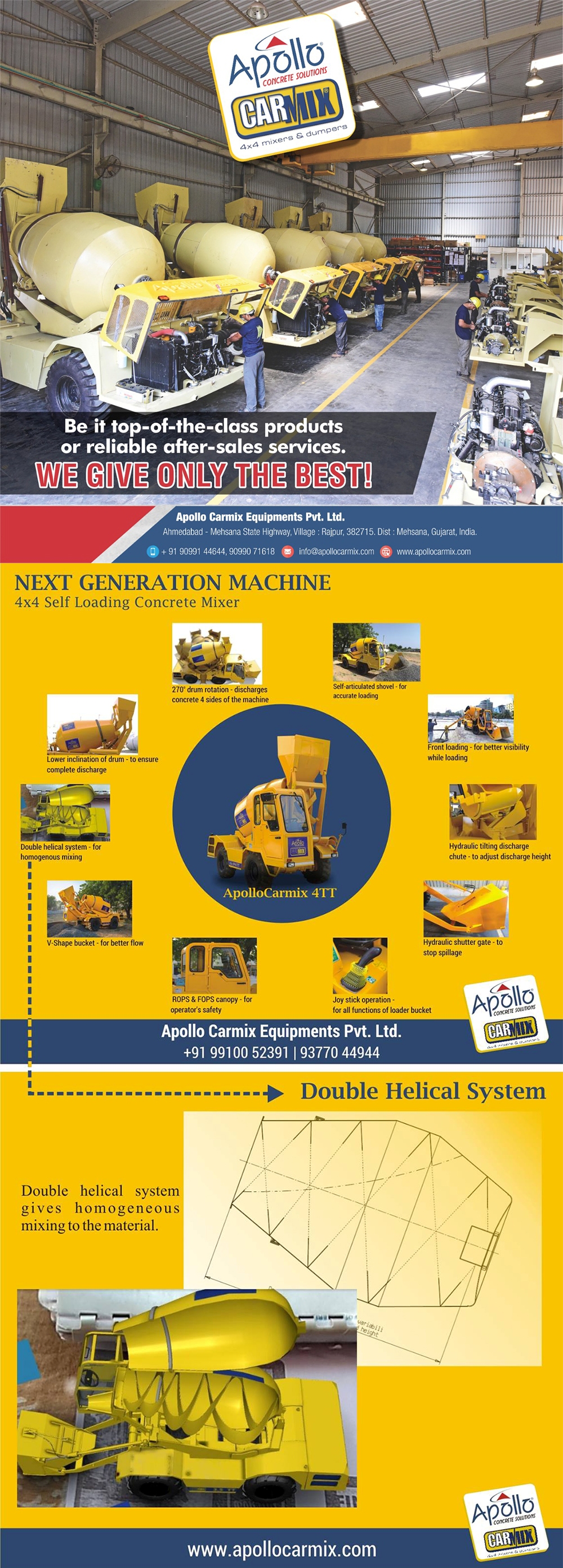
Southeast Asia has a dynamic growth, fueling construction activities across its urban centers and remote regions. However, construction in isolated or hard-to-reach areas often possess significant challenges, including logistical difficulties and resource constraints. Self-loading concrete mixers offer a transformative solution to these challenges, ensuring seamless concrete production and delivery even in the most remote corners of the region.
This article explores how Self-loading concrete mixers are revolutionizing remote construction in Southeast Asia, addressing logistical and operational challenges and empowering builders to achieve more with less.
The Unique Construction Landscape of Southeast Asia
1. Geographical Challenges
- Southeast Asia is known for its diverse geography, from mountainous regions to isolated islands. These areas often lack the infrastructure needed to transport and produce concrete efficiently.
- Self-loading concrete mixers can navigate uneven terrains, ensuring uninterrupted operations even in remote locations.
2. Growing Infrastructure Demands
- With booming populations and rapid urbanization, the demand for new roads, housing and industrial infrastructure is at an all-time high.
- Remote construction projects, such as rural bridges or island resorts, may benefit greatly from the on-site concrete production capabilities of these mixers.
3. Limited Access to Resources
- In rural parts of Southeast Asia, construction resources, including raw materials and skilled labour, can be scarce.
- Self-loading concrete mixers may help bridge this gap by combining multiple functionalities in a single machine.

How Self-Loading Concrete Mixers Cater to Southeast Asia's Needs?
1. Adaptability to Different Terrains
- These mixers are designed to operate on diverse surfaces, including unpaved roads, rocky terrains and muddy paths common in Southeast Asia.
- Their mobility ensures that projects in even the most remote regions are completed efficiently.
2. On-Site Concrete Production
- Self-loading concrete mixers can produce fresh concrete directly on-site, eliminating the need to transport it from distant batching plants.
- This feature may ensure consistent concrete quality and reduce delays caused by logistical challenges.
3. Cost and Resource Efficiency
- By eliminating the need for multiple machines, self-loading mixers may reduce both operational costs and the reliance on skilled labour.
- Their automated features ensure precise mixing, which can minimize material wastage-a critical advantage in resource-scarce areas.
Why Remote Construction in Southeast Asia Needs Self-Loading Mixers?
1. Faster Project Timelines
- In remote regions, delays in concrete transportation can significantly impact project schedules. Self-loading concrete mixers allow builders to mix and pour concrete on demand, ensuring faster progress.
2. Flexibility Across Project Types
- From constructing rural roads to building island resorts, self-loading mixers may be used across a variety of projects in Southeast Asia.
- Their versatility enables contractors to handle diverse tasks with a single machine.
3. Overcoming Workforce Challenges
- The construction industry in Southeast Asia often faces a shortage of skilled workers, especially in remote locations.
- Self-loading mixers’ user-friendly designs and automated systems may reduce the need for extensive training or large teams.
Applications of Self-Loading Concrete Mixers in Remote Southeast Asia
1. Rural Road Construction
- Self-loading concrete mixers can produce and pour concrete for rural road networks, essential for connecting remote communities.
- Their mobility ensures smooth operation on unpaved or uneven roads.
2. Island Resorts and Tourism Infrastructure
- For island-based projects in countries like Indonesia or the Philippines, self-loading mixers may eliminate the need for batching plants or heavy logistics.
- Their compact design allows them to navigate small, confined spaces typical of island sites.

3. Agricultural Infrastructure
- Southeast Asia’s agricultural sector relies heavily on rural infrastructure, including irrigation systems and storage facilities.
- Self-loading concrete mixers can support these projects by ensuring a steady supply of high-quality concrete in isolated areas.
Challenges Faced by Remote Construction Projects in Southeast Asia
1. Limited Infrastructure
- Many remote areas lack basic road networks, making transportation of construction materials challenging.
- Self-loading mixers, with their ability to mix and transport concrete independently, may address this issue effectively.
2. Weather Extremes
- Heavy rains, high humidity and unpredictable weather are common in Southeast Asia. These conditions can disrupt construction schedules and compromise concrete quality.
- Self-loading mixers on-site capabilities may help ensure consistent results, even in adverse weather.
3. High Logistics Costs
- Transporting concrete or equipment to remote areas can be costly and time-consuming.
- By combining loading, mixing and pouring into one machine, self-loading mixers may significantly reduce logistical expenses.
How to Choose the Best Self-Loading Concrete Mixer for Southeast Asia?
1. Consider Terrain Compatibility
- Select a mixer with robust tires, strong suspension and high ground clearance to handle Southeast Asia’s diverse terrains.
2. Look for Energy Efficiency
- Fuel-efficient mixers may lower operating costs and align with eco-friendly construction goals.
3. Prioritize Advanced Technology
- Opt for mixers with automation and user-friendly controls to simplify operations and improve accuracy.
4. Evaluate Manufacturer Support
- A reliable manufacturer may offer excellent after-sales service, including maintenance and spare parts availability, critical for remote projects.
Conclusion: Building the Future of Southeast Asia
Self-loading concrete mixers are paving the way for more efficient and sustainable construction practices in Southeast Asia. Their ability to overcome logistical challenges, adapt to diverse terrains and support green building initiatives makes them an indispensable asset for remote projects.
As Southeast Asia continues to grow and evolve, the demand for versatile and reliable construction equipment will only increase. By choosing the right self-loading concrete mixer, contractors can not only meet but exceed the region’s unique construction demands.
FAQs About Self-Loading Concrete Mixers
Yes, they are designed to operate on unpaved roads, muddy paths and rocky terrains, making them ideal for remote sites.
Many models feature fuel-efficient engines and reduce material waste, aligning with sustainable construction practices.
Their adaptability, efficiency and sustainability make them essential for meeting the unique demands of remote construction in the region.
Recent Articles
- Revolutionizing Road Construction in South Africa with Self-Loading Concrete Mixers
- Exploring the Demand for Self-Loading Concrete Mixers in Asia’s Growing Markets
- Self-Loading Concrete Mixers: A Solution for Remote Construction in Southeast Asia
- How Self-Loading Concrete Mixers are Revolutionizing Remote Construction Sites?
- The Role of Self-Loading Concrete Mixers in Sustainable Building Practices
Copyright © 2025, Apollo Carmix Equipments Private Limited (ACEPL), All rights are reserved.
Web Design & SEO by Webmasterindia



